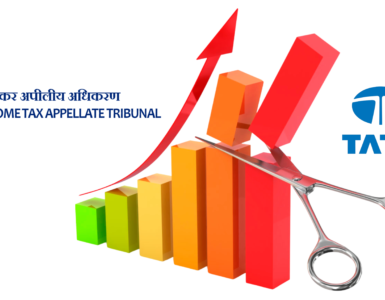Introduction:
In the case of merger and demerger, two dates are crucial, the “Appointed Date” and secondly the “Effective Date“. Corporate managers spend a lot of time to plan the exact timing of these dates. ‘Appointed Date’ is normally arranged to secure the interests & objects of the respective companies. And ‘Effective Date’ is finalized by High Court depends on upon filing of a final order of High Court with Registrar of Companies.
Importance of ‘Appointed Date’ & ‘Effective Date’:
Any scheme of compromise or arrangement should identify a date in the scheme itself as ‘Appointed Date’. This ‘appointed date’ is crucial for arriving at values of assets and liabilities appearing in the books of Accounts both for the purpose of the transfer to the Transferee company and also for arriving at the value of shares for the transferor and transferee company viz. exchange ratio. Generally, the first day of a month or the first day of a financial year is identified as the ‘appointed date’, though the Court has the discretion to decide any date as ‘transfer date’.
The ‘Effective Date’ on the other hand is the date on which the transferee company files the order of the High Court sanctioning the scheme with the Registrar of Companies for registration and when the order has so filed the amalgamation or arrangement becomes effective or having come into force from the ‘Appointed Date’. The effective date is subsequent date and the company has no control over it.
Issues regarding ‘Appointed Date’ & ‘Effective Date’ and their effects on Various Aspects of Restructuring:
- Identification of Assets & Liabilities of Transferor Company:
As per the requirements of Section 391 to 394 of the Companies Act, 1956 the Transferor company should identify and quantify the assets and liabilities which are sought to be transferred to the transferee company under merger or demerger. This identification & quantification of assets and liabilities should be done as on Appointed Date.
The details of such assets & liabilities may be annexed as a schedule to the scheme. This identification gives certainty to the scheme, as members of both the companies get a clear idea about what is going to be transferred?
- Changes in the name/status of the company after Appointed Date:
There could be some changes in name, address or status of the company after the appointed date. Normally such changes do not affect the sanction of the scheme before High Court unless they adversely affect the rights & interests or obligations of the company and/or its members and creditors.
- Accounting Treatment:
Normally the Transferee Company should, upon the Scheme coming into effect on effective date record, the assets and liabilities of the Transferor Company vested in it pursuant to the Scheme, at the fair values thereof at the close of business of the day immediately preceding the Appointed Date.
- Increase in share capital & Appointed Date:
The shares are allotted only after the scheme is sanctioned by the court and not before. Further, the increase of authorised share capital is always upon sanctioning of the scheme. Hence any objection to the scheme on the ground that on appointed date the share capital of the Transferee Company was not sufficient to give effect to the scheme cannot be sustained.
- Nature of Business:
From the Appointed Date and till the Effective Date transferor company should act as a trustee of a transferee company.
The Transferor Companies should carry on all their respective business and activities and should be deemed to have held or stood possessed of and should hold and stand possessed all the said Assets for and on account of and in trust for the Transferee Company.
All the profits or income accruing or arising to the Transferor Companies or expenditure or losses arising or incurred by the Transferor Companies should for all purposes be treated and accrued as the profits and income or expenditure or losses of the Transferee Company, as the case may be.
The Transferor Companies should carry on their respective business activities with reasonable diligence, business prudence and should not alienate, charge, mortgage, encumber or otherwise deal with the said assets or any part thereof except in the ordinary course of business or pursuant to any pre-existing obligation undertaken by the Transferor Companies prior to the Appointed Date except with prior written consent of the Transferee Company.
The Transferor Companies should not, without prior written consent of the Transferee Company, undertake any new business.
The Transferor Companies should not, without prior written consent of the Transferee Company, take any major policy decisions in respect of the management of the Company and for the business of the Company and should not change their present capital structure.
- Employee Transfer:
Normally in any merger/amalgamation, all employees of the Transferor Company in service on the Effective Date could become employees of the Transferee Company on such date without any break or interruption in service and on terms and conditions not less favorable than those subsisting with reference to the Transferor Company as on the effective date. The main object of transfer of any undertaking under the scheme is to see the continuance of business, at that undertaking, under the control of Transferee Company. So the transferor company should arrange to maintain the cadre and number in service on the effective date who are willing to get transferred to the transferee company
- Declaration of Dividend: Transferee Company
Dividend declared by the transferee company, after the Appointed Date, is payable to members of the transferor company also. And this does not violate the provisions of Section 205 of Companies Act, 1956. While it is true that unless court sanctions the scheme, it would not become effective, but once the court accords its sanction, it would become effective from the Appointed Date. So the shareholders of Transferor Company become shareholders of Transferee Company from ‘Appointed Date’ itself. Hence they are entitled to any dividend declared by Transferee Company after ‘Appointed Date’.
Also Read: An Insight into Appointed Date and Effective Date in Merger and Demerger
Record Date:
As this is a sensitive issue to the shareholders, any ambiguity in this regard could be avoided by providing a clause in the Scheme stating that the transferor company’s shareholders should be entitled to such dividend, rights and other benefits as and from ‘Record Date’ to be fixed by the Board of transferee company upon scheme becoming effective as per the court sanction..
- Dividend, Profit And Bonus/Rights Shares: Transferor Company
The Transferor Company should not without the prior written consent of the Transferee Company declare any dividend, whether interim or final, for the financial year ending on or after the Appointed Date and subsequent financial years.
The Transferor Company should not issue or allot any Bonus Shares or Right Bonus Shares out of it’s Authorised or Unissued Share Capital on or after the Appointed Date.
Normally, the profits of the Transferor Company from the appointed date should belong to and be the profits of the Transferee Company and will be available to the Transferee Company for being disposed of in any manner as it thinks fit.
The Transferor Company should not, except with the written consent of the Board of Directors of the Transferee Company, alter its paid up capital structure by making a preferential allotment of shares or otherwise, once the Scheme is approved by the Board of Directors of the Transferee Company.
- Tax Liability:
The basic principle behind deciding cut-off dates for direct or indirect tax liability can be explained as under,
For day to day activities, the liability shifts only upon effective date and for any other activity such as annual assessment etc., the cut-off date will be appointed date.
- Indirect Tax Implications:
Indirect taxes are generally levied upon activities like services, manufacturing/production of goods, a sale of goods etc. After the ‘appointed date’; though these activities are concerned with ‘transferred undertaking’, their ultimate effect on financial position will normally be shown in the books of account of Transferee Company only after the effective date. So for an indirect taxes, cut-off date is ‘Effective date’. Till effective date, Transferor Company is liable to pay the indirect taxes if any.
Sales Tax Deferral Scheme:
Where the transferor company which was enjoying a deferral scheme, transferred as a unit the whole business without obtaining prior permission from the prescribed authority, the transferee is not entitled to continuation of deferral. As such deferral schemes are created for specific areas or for specific industries with certain pre-conditions so it is necessary that prior approval from the concerned authority may be obtained. Further for a continuance of such deferral scheme, the transferee company should fulfill all the requirements for such continuance.
- Excise Duty:
On amalgamation, on effective date, Transferee Company takes over the manufacturing activity of Transferor Company and therefore, the transferor company has to surrender its registration under Excise Rules. Further Transferee Company is required to apply and obtain fresh registration of the premises for carrying on manufacturing activity. On sanction of a scheme, any credit on inputs availed by the transferee company on or after Appointed Date, which may be either lying in stock or may be contained in the work in progress. On sanction of a scheme, such credit is also to be transferred to the transferee company. Such transfer of credit is allowed only if the stock of inputs or work in progress is also transferred along with the factory to the new site or new ownership. The basic condition is that the manufacturing unit remains intact and continues to manufacture the same goods with the very same inputs.
- Liability for evasion of Excise Duty:
Normally the liability for penalties would remain the liability of those who committed the offense as a manufacturer and cannot be transferred in law to a successor. So any liability for evasion of Excise Duty after Appointed Date and till Effective Date should be discharged by the manufacturer under the control of Transferor Company.
- Re-assessment and refilling of assessment:
During the intervening period from Appointed Date to Effective Date, both transferor & transferee company would have filed various declarations for prices and classifications, assessment of tax liabilities, claimed exemptions and so on as independent entities. These declarations may not remain so on scheme becoming effective. The Supreme Court in the case of Marshall Sons & Co. (India) Ltd. vs. ITO (1997 [223] ITR 809) has held that the date of amalgamation/transfer is the date specified in the scheme or the date specified by the Courts. Therefore, as soon as the formalities are completed, the transfer becomes effective and related back to the date of transfer specified by the parties/court. A logical corollary of this is that the activities of both the entities would be clubbed effective from that date and as a result, there may be a change in facts. Hence these earlier declarations would have to be re-determined.
Though it is not legally binding on the companies, the concerned departments should be informed about such proposed Arrangement or Amalgamation well in advance. In the event of omission of such notice of amalgamation, the department may allege the company for suppression of facts with an intention to evade duty and invoke extended period of five years for assessment.
- Income Tax Issues:
Quite often on the basis of the ‘appointed date’ the rights and liabilities of the transferor and transferee are segregated. This date is the date on which the merger takes place for the purposes of the Income Tax Act. So while computing assessment of Income Tax cut-off date is ‘appointed date’. So till effective date, ‘TDS’ is the responsibility of Transferor Company.
The decision in Union of India v. Ambalal Sarabhai (55 Comp. Cas. 623) clearly illustrates the significance of the ‘appointed date’ of the merger. In this case, the appointed date in the original scheme of amalgamation of two companies was July 1, 1981. Under the modified scheme the appointed date was shifted to April 1, 1980, which was also the first day of the accounting year of the transferor company. The IT department objected to the scheme on the ground that by shifting the date the transferee company was seeking to set-off, by circumventing the provisions of S.72A, the losses of the transferor company for the accounting year 1980-81 against the profits of the transferee company. The High Court, dismissing the objections of the Income Tax Department, held that, “It is true that incidentally as a result of shifting the date, the transferee company will get the advantage of setting off the loss but that could hardly be considered good or sufficient ground for refusing to sanction the modified scheme. When the transferee company is taking over liabilities along with the assets of the transferor company there is nothing if the transferee company evolves a scheme so as to take as much advantage as possible as may be permissible according to law.”
So the companies should consider their objectives from the scheme and then decide the actual date on which the merger should take effect.
- Stamp Duty Assessment:
As in other cases of conveyance, the duty is levied on the basis of true market value on the date of execution of the instrument. But in the cases of merger/amalgamation of listed company stamp duty is levied with reference to the market value of shares on appointed date. For unlisted companies, it may be either appointed date as mentioned in the scheme or date of an order of high court or date of registration of the order.
Though market value as on appointed date is to be referred for assessment of duty, the companies may rely on the Supreme Court’s judgment in Marshall case and may ask for the values as on date of valuation which may be much after appointed date. The companies may also argue and refer to the effective date to claim more depreciation especially in the market value of the immovable properties.
The companies should adopt the appropriate date which will give a more beneficial assessment of duty.
Conclusion:
The companies are free to decide any ‘Appointed Date’ for their schemes. As this ‘appointed date’ acts as a cut-off date for many aspects of merger/demerger, more emphasis should be given on this before finalizing any scheme. So any error in finalizing ‘Appointed Date’ may affect adversely to the interests of Company and its shareholders. At the same time judicious selection of ‘Appointed Date’ may create more value by minimizing Tax liability, resolving employee’s issues and bringing certainty towards the asset-liability structure of transferee company after the merger/demerger. It also helps to observe selective pick & drop option for any distribution of dividend or bonus shares to the shareholders. So from this, we may conclude that ‘Appointed Date’ if selected wisely may ensure successful M & A, at the same time any error in selecting appropriate ‘Appointed Date’ may ruin an otherwise sound merger deal.




